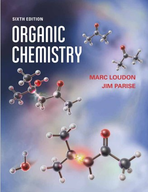A compound A has prominent infrared absorptions at 1050, 1786, and 1852 cm1 and shows a
Chapter 21, Problem 21.48(choose chapter or problem)
A compound A has prominent infrared absorptions at 1050, 1786, and 1852 cm1 and shows a single absorption in the proton NMR at d3.00. When heated gently with methanol, compound B, C5H8O4, is obtained. Compound B has IR absorption at 25003000 (broad), 1730, and 1701 cm1 , and its proton NMR spectrum in D2O consists of resonances at d2.7 (complex splitting) and d3.7 (a singlet) in the intensity ratio 4:3. Identify A and B, and explain your reasoning.
Unfortunately, we don't have that question answered yet. But you can get it answered in just 5 hours by Logging in or Becoming a subscriber.
Becoming a subscriber
Or look for another answer
